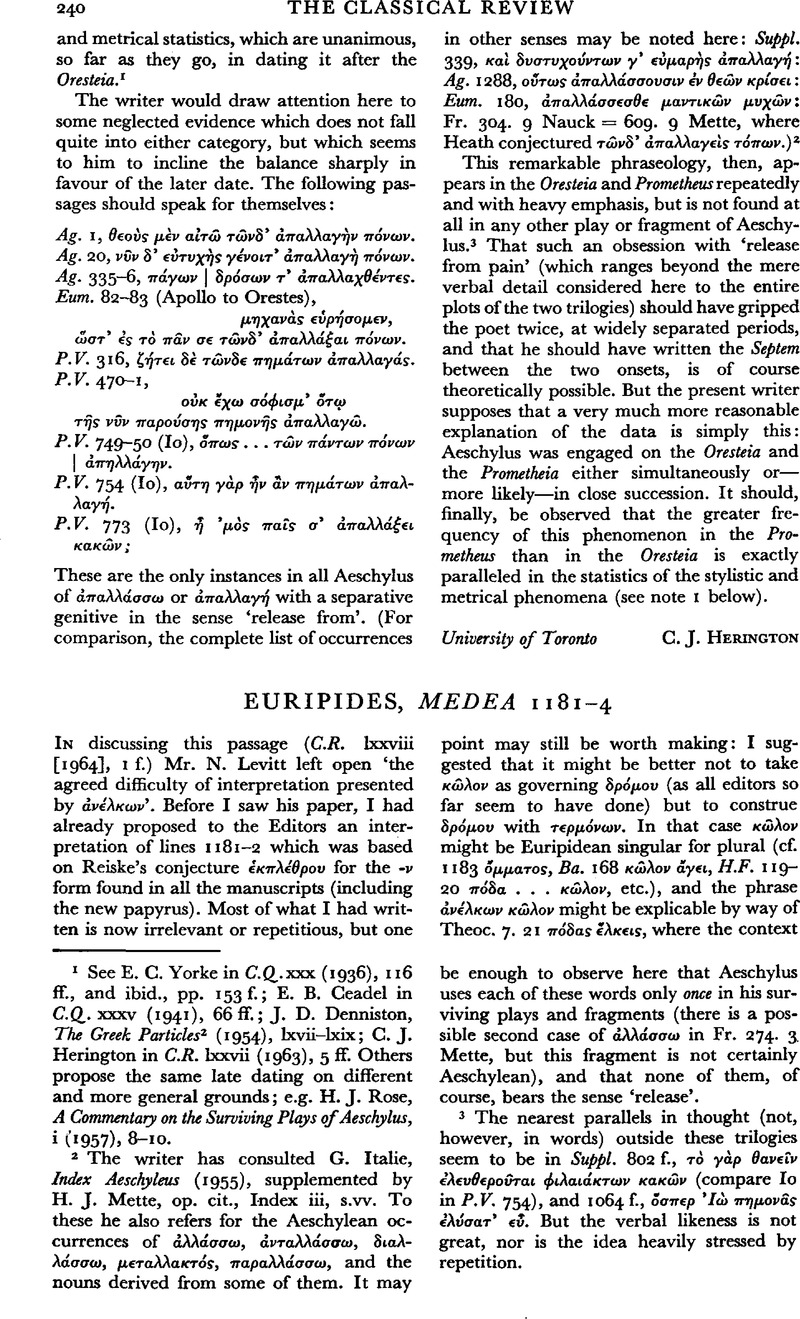No CrossRef data available.
Published online by Cambridge University Press: 27 February 2009

1 See Yorke, E. C. in C.Q. xxx (1936), 116 ff.Google Scholar, and ibid., pp. 153 f.; Ceadel, E. B. in C.Q.. xxxv (1941), 66 ff.;CrossRefGoogle ScholarDenniston, J. D., The Greek Particles 2 (1954), lxvii–lxix;Google ScholarHerington, C. J. in C.R. lxxvii (1963), 5 ffGoogle Scholar. Others propose the same late dating on different and more general grounds; e.g. Rose, H. J., A Commentary on the Surviving Plays of Aeschylus, i (1957). 8–10.Google Scholar
2 The writer has consulted Italie, G., Index Aeschyleus (1955)Google Scholar, supplemented by H. J. Mette, op. cit., Index iii, s.vv. To these he also refers for the Aeschylean occurrences of ⋯λλ⋯σσω, ⋯νταλλ⋯σσω, διαλλ⋯σσω, μεταλλακτ⋯ς, παραλλ⋯σσω, and the nouns derived from some of them. It may be enough to observe here that Aeschylus uses each of these words only once in his surviving plays and fragments (there is a possible second case of Ἅλλ⋯σσω in Fr. 274. 3 Mette, but this fragment is not certainly Aeschylean), and that none of them, of course, bears the sense ‘release’.
3 The nearest parallels in thought (not, however, in words) outside these trilogies seem to be in Suppl. 802 f., τ⋯ γ⋯ρ θανεῖν ⋯λευθερο⋯ται φιλαι⋯κτων κακ⋯ν (compare in P.V. 754), and 1064 f., ὅσπερ Ἰὼ πημον⋯ς ⋯λ⋯σατ' εὖ. But the verbal likeness is not great, nor is the idea heavily stressed by repetition.